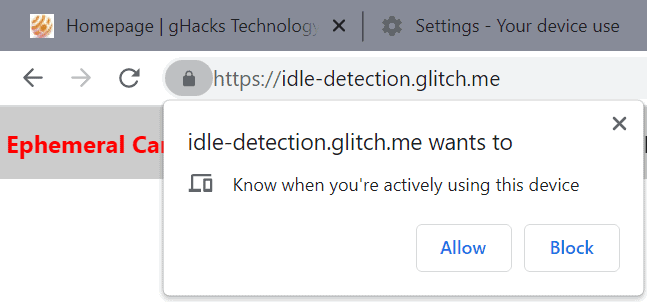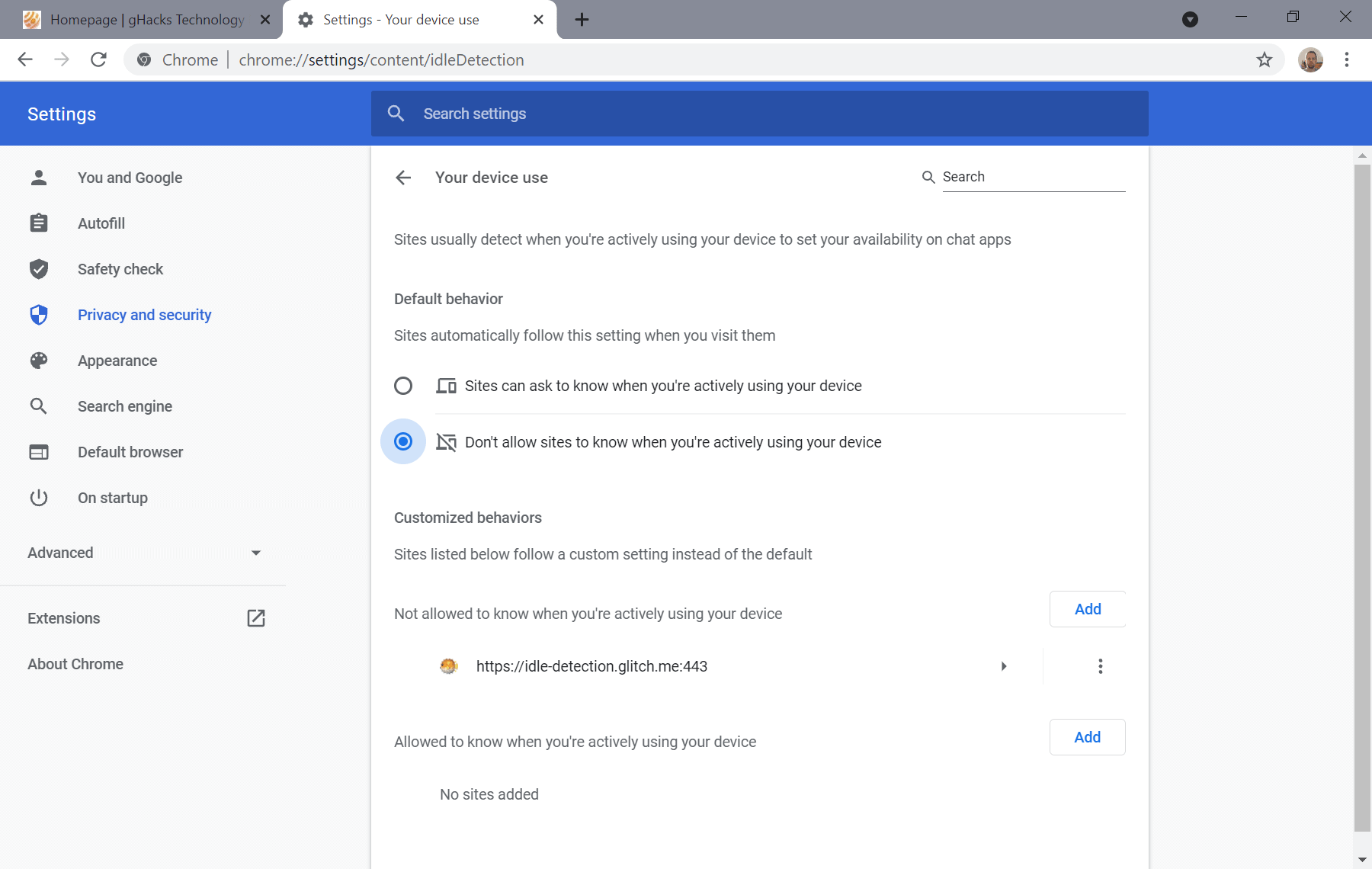How to prevent sites from requesting inactivity detection API permissions in Chrome

Google introduced a controversial API in Google Chrome 94 this month. Called the Idle Detection API, it allows sites to query the device to see if it is inactive or in use. A device goes into an inactive state if it is not actively used for a period of time; the API can request the inactive state of components or events, such as keyboard, mouse, or screen saver.
Google suggests that sites could use it for a number of useful applications, such as revealing if chat contacts are available, automatically resetting kiosk systems after a period, or performing expensive calculations only if the user does not. is not inactive.
Critics of the inactivity detection API, Mozilla and Apple in particular, point out that it has the potential for abuse. While it is true that users must grant permissions to sites before access to the inactivity detection API is granted, sites can convince users to grant permission. Engineers at the companies believe the API can be abused for gloomy usage patterns or to perform expensive calculations when the device is idle.
Mozilla and Apple have decided that Firefox and Safari will not support the inactivity detection API, at least not in its current form. Chrome users and those using Chromium-based browsers will get the API. Some companies can turn it off in their browsers, some can’t.
Chrome is a prime example. The API is already implemented in Chrome 94 Stable, and users can see requests from sites to give them permission. The default setting is set to “ask,” which means sites will ask for user permission each time a site is visited. Sites can be blacklisted or whitelisted, to block them permanently or allow API access without requests.
Chrome users can automatically block all requests by changing the site’s default permission state. Site requests will be refused automatically if the change is made. The same setting may also work in other Chromium based browsers that have implemented the API and have not disabled it.
Here’s what to do:
- Load chrome: // settings / content / idleDetection in the web browser’s address bar.
- Change the default behavior state from “Sites can ask to know when you are actively using your device” to “Do not allow sites to know when you are actively using your device.”
Chrome will no longer display permission request prompts after making the change. Just return the preference if you need to reset it. Another option you have is to add sites to the allow list, as they can then use the API without a request prompt.
Now you: What is your opinion on the Idle Detection API? (via Techdows)
Summary

Article name
How to prevent sites from requesting inactivity detection API permissions in Chrome
The description
Learn how to prevent sites from requesting device sleep status in the Google Chrome web browser.
Author
Martin Brinkmann
Editor
Ghacks Technology News
Logo

Advertising
